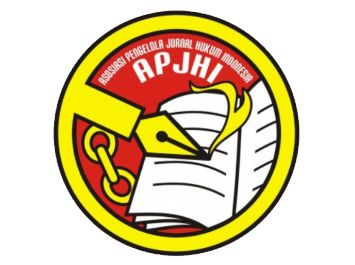PIMPINAN KOMISI PEMBRANTASAN KORUPSI DAN TANTANGAN PENANGGULANGAN KORUPSI DI ERA 4.0
Abstract
The Corruption Eradication Commission was formed with the main mission of carrying out prevention and law enforcement in eradicating corruption. The Chairperson of the Corruption Eradication Commission (KPK) is the spearhead in tackling corruption in Indonesia. In fact, political transactions in the election of the Corruption Eradication Commission (KPK) leader may be eliminated, so candidates with high integrity can be eliminated. The method in this paper uses the normative legal writing method because it examines the laws and regulations, literature, and journals relating to the material examined, which consists of the type of data obtained in this study is secondary data that is data obtained from library research and documentation , which is the result of research and processing of others, which are already available in the form of literature or documentation. The development of technology is now increasingly rapid where everything is completely digital, this era of sophisticated even even corruption can be digital, therefore the ability of the Corruption Eradication Commission (KPK) must be upgraded according to the times to be able to detect and solve corruption cases that are increasingly complicated transactions
Authors who publish with this journal agree to the following terms:
- Authors retain copyright and grant the journal right of first publication with the work simultaneously licensed under a Creative Commons Attribution License that allows others to share the work with an acknowledgment of the work's authorship and initial publication in this journal.
- Authors are able to enter into separate, additional contractual arrangements for the non-exclusive distribution of the journal's published version of the work (e.g., post it to an institutional repository or publish it in a book), with an acknowledgment of its initial publication in this journal.
- Authors are permitted and encouraged to post their work online (e.g., in institutional repositories or on their website) prior to and during the submission process, as it can lead to productive exchanges, as well as earlier and greater citation of published work.












